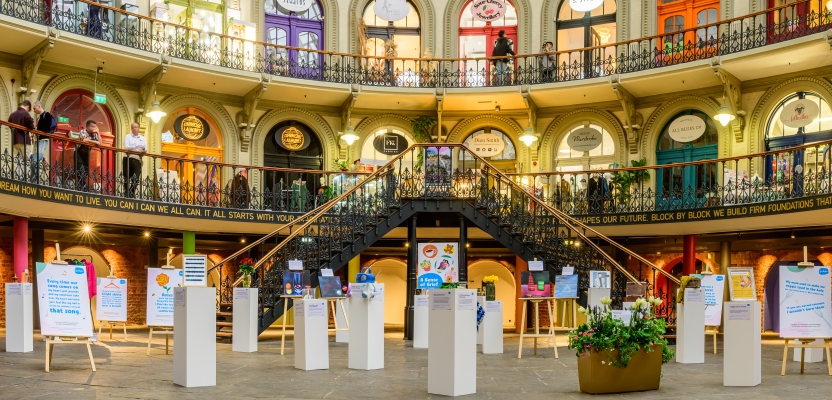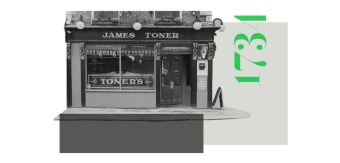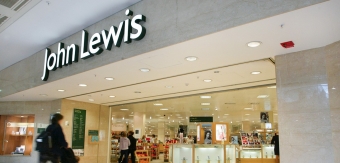National bereavement charity Sue Ryder’s new campaign shows how touch, taste, sight, smell and sound can trigger emotions for those grieving.
The campaign launched through a unique pop-up exhibition at The Corn Exchange in Leeds and encourages a deeper understanding of how touch, sight, sound, smell and taste can trigger emotions around someone’s grief.
The exhibition explored these five senses, guiding people through sensory objects and experiences that evoke a range of feelings associated with grief, shared by Sue Ryder’s celebrity ambassadors and people the charity has supported.
The campaign comes as Sue Ryder releases new research which reveals a staggering 91% of people agree that sensory triggers remind them of someone they have grieved or are grieving.
To learn more, we spoke to the PR teams at Sue Ryder and The PHA Group, who were behind the exhibition.
What was the brief?
To design and execute a creative campaign to raise awareness of Sue Ryder’s bereavement services. Sue Ryder had anecdotal evidence that showed that people who were grieving, found their grief was often triggered by the senses, for example smelling their perfume or hearing their favourite song.
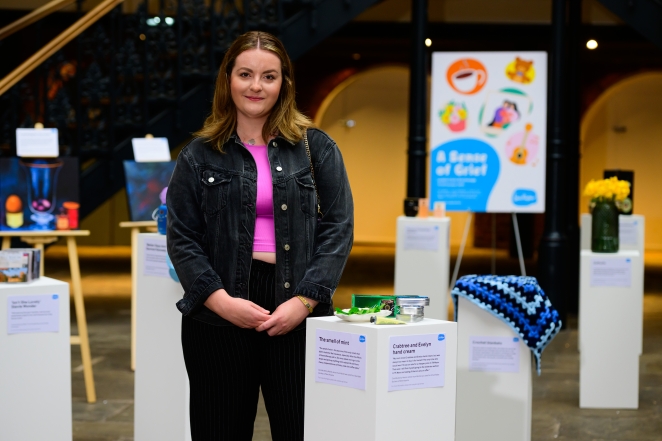
For the campaign, we wanted to raise awareness that people who have been bereaved are often caught off guard in their grief and how they can cope with this. Following the ideation stage, we decided to explore the impact the five senses can have on people grieving and how people can support those in their grief, as well as access Sue Ryder’s bereavement support services.
How did the initial pitch/brainstorming phase go?
The brainstorm process was helpful in building our idea. We had a few sessions with the Sue Ryder team and PHA team to discuss the many intricacies of grief. This led us to talk about the role our senses play in tiggering emotions associated with grief – both positive and negative.
During the brainstorm, we discussed exploring a campaign that brought this to life, which ultimately resulted in the pop-up exhibition idea. Whilst we had anecdotal and personal evidence that senses can trigger grief, we understood the importance and value of research to validate the campaign idea.
As part of the brainstorming process, we planned they questions we would want to ask people to understand just how connected senses are with grief.
What was the process behind ideating the concept?
The process of conceptualising the 'A Sense of Grief' campaign was rooted in understanding the complexities of the grieving process.
To create the concept, we identified the need for a campaign that could create a tangible connection between the grieving process and the sensory experiences that often trigger it. This was based on the understanding that grief is a universal, yet deeply personal experience that can be triggered by the simplest of sensory cues.
We commissioned a survey with Censuswide to gather data from people that have experienced a close bereavement, asking about sensory objects and experiences that evoke memories and emotions about a loved one who has died. This helped us truly understand the connection on a nationally representative scale and informed us of the senses that had the greatest impact and why.
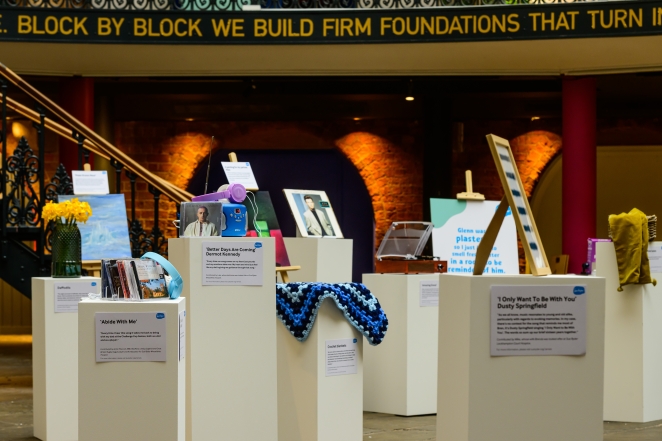
Armed with this data, we began to develop the concept of 'A Sense of Grief'. We wanted to create a campaign that not only highlighted the impact our senses have on the grieving process, but also encouraged a deeper understanding and empathy for those experiencing it from those around them.
To help us, we collaborated with Sue Ryder’s celebrity ambassadors and people that have been supported by the charity, inviting them to share the sensory objects and experiences that evoke their feelings of grief. This allowed us to create an accurate and relatable campaign through real stories.
What was the production process like?
The main element of the production process involved planning and then executing the pop up exhibition. We wanted to create an immersive experience, whereby visitors could interact with the items and engage with the sensory objects.
The first step was to choose a location for the exhibition. We discussed options as a team and decided to launch it in Leeds. This was for a variety of reasons, one of which being due to the success we had with a previous campaign in the region in 2022, as well as the location being close by to the Sue Ryder’s Wheatfields and Manorlands Hospices – so many locals have a personal connection and affiliation to the charity. We eventually decided on a beautiful venue called Leeds Corn Exchange.
Once we understood the space we were working with, we ordered plinths and gathered replica items that Sue Ryder ambassadors and case studies provided, each representing a sensory items or experiences that they attributed to their grief.
Items were placed on plinths with information labels explaining the significance of each item and who they were associated with. The PHA Design team created all artwork for the exhibition, including multiple large posters with information and exhibition flyers.
The exhibition was open to the public for two days, allowing people to engage with the sensory triggers of grief and hopefully foster a deeper understanding of this universal, yet deeply personal experience.
There was a dedicated reflection space for people to sit and enjoy a refreshment and snack if they were moved by the exhibition. We also ensured representatives from the charity were there to support anyone who wished to speak to someone.
What was the biggest challenge during production? How did you overcome it?
The biggest challenge we faced during the production of the 'A Sense of Grief' campaign was creating an immersive and interactive exhibition that would resonate with visitors, while also handling the sensitive topic of grief with the care and respect it deserves.
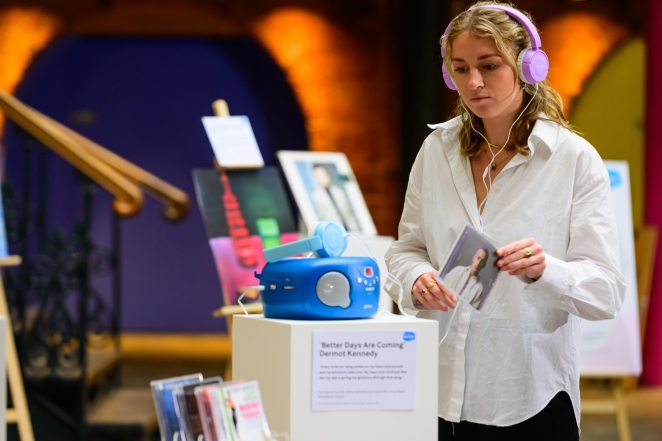
Grief is a deeply personal and often painful experience, and we needed to ensure that our exhibition did not inadvertently cause additional distress. We addressed this challenge through a combination of careful planning, collaboration, and constant communication.
The team worked closely with our contributors, ensuring they felt comfortable with how their personal experiences were being presented. We also sought advice from Sue Ryder's experts to ensure we were approaching the topic of grief in a supportive manner.
What kit/tools/software were used to create the project?
We worked with Censuswide on the survey, as well as using design software to create the artwork.
What is one funny or notable thing that happened during production?
The notable part of this exhibition was seeing how moved people were and how they engaged with the items on show. We had lots of people come over to us and talk about their own experiences of grief and what triggers their senses and makes them think of the person who died.
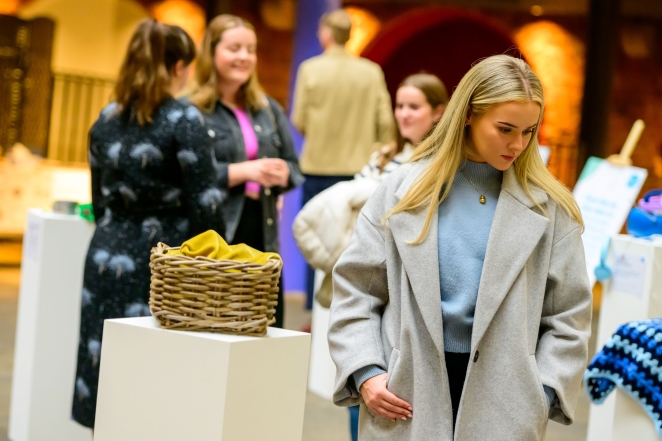
Several people came over to donate to Sue Ryder, which was not a key objective of the campaign, but they were moved by the exhibit and wanted to help.
What’s the main message of this project and why does it matter?
Grief can trigger a range of emotions every single day. It can catch you off guard and be triggered in the form of a certain smell, sound, sight, taste, or touch. No one should go through grief alone. Sue Ryder offers a range of bereavement support services, including an online bereavement community and free online counselling sessions.
How long did it take from inception to delivery?
Approximately 5-6 months.
What do you hope it achieves for the brand?.
Ultimately, we aim to highlight Sue Ryder's commitment to supporting individuals through the most challenging of times, reinforcing the charity’s position as a free and accessible resource for those dealing with grief.
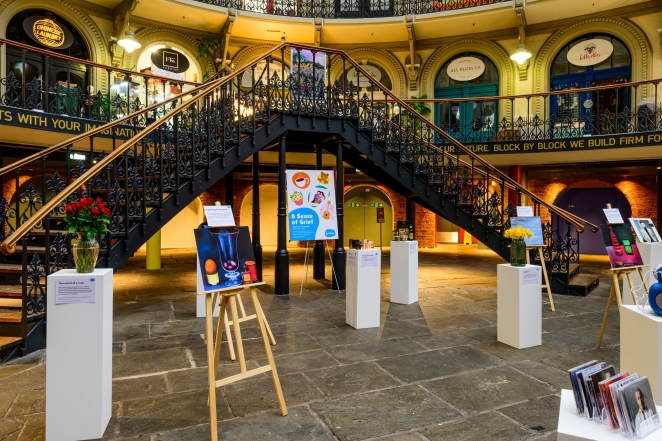
We hope this campaign will not only enhance Sue Ryder's position in this space, but also extend its reach and impact, helping more people navigate their grief.
Credit list for the work?
Sue Ryder
PR team: The PHA Group
Design team: The PHA Group Design Team
Photographer: Mark Wheelwright
Survey company: Censuswide
Location: Leeds Corn Exchange

